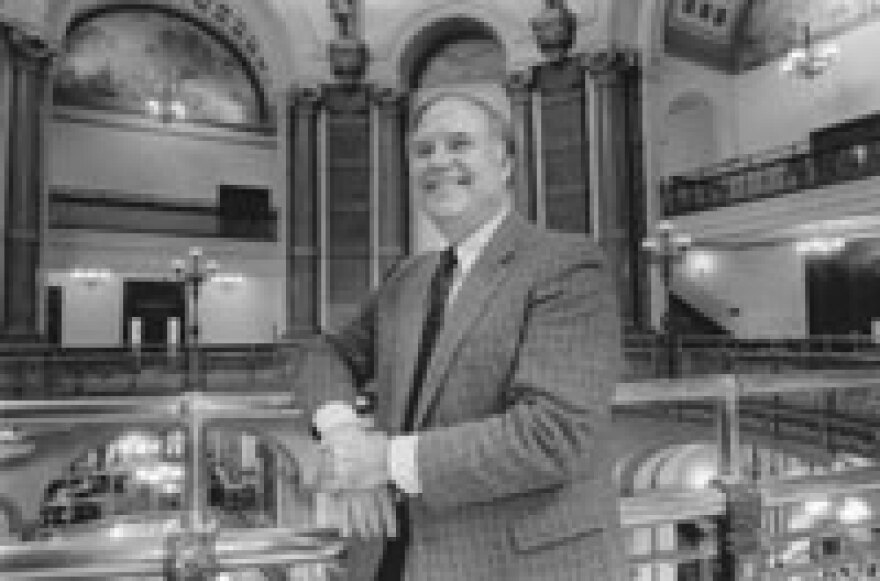As Illinois lawmakers return from spring break for what everyone fervently hopes will be the last two months of the legislative session, one grim fact overshadows all others: The state is flat-out broke. No, even worse, it’s plunged deep in debt, the result of years of living beyond its means.
Consider a smattering of news items that appeared before the General Assembly left Springfield in mid-March:
•?All repairs and maintenance for the prison system’s automotive fleet now must be cleared through top administrators, rather than performed as needed, because the Department of Corrections owes about $2 million to the state agency that services state vehicles and doesn’t have the money to pay the repair bills.
• Only about half of the 80 beds in a new addition to the LaSalle Veterans Home opening this summer will be available to vets needing nursing care because the state doesn’t have the $3 million needed to staff all the new beds. Meanwhile, more than 500 eligible veterans are on the waiting list for care.
• Poor families in half the counties outside the Chicago area have a difficult time finding dental care, in large part because state health insurance programs pay less than half a dentist’s fee, according to dental care advocates.
• Stiff hikes in tuition and fees for students at state colleges are likely under the budget Gov. Rod Blagojevich unveiled last month, administrators warned. It would cut operations funding next year for the state’s nine public universities.
The common thread running through all the reports is the inescapable conclusion that Illinois’ appetite for public services outstrips its ability to pay for them.
State Comptroller Daniel Hynes concurs. Despite “impressive revenue growth” since FY 2003 — roughly a 24 percent gain — the state ended FY 2007 last summer with the worst deficit in the nation for the fourth year in a row, almost $3.7 billion measured by Generally Accepted Accounting Principles, Hynes reported a few weeks before the governor’s address.
In a fiscal state-of-the-state report, Hynes said general funds revenues increased at a rate of $1.4 billion a year since 2003. General funds — the state’s basic checkbook account — come largely from income and sales taxes and federal reimbursement for spending on health care and social services. Over the last five years, income tax collections grew 35 percent, while sales tax receipts were up 18 percent.
But general funds spending kept pace, especially for health care and K-12 education. Liability for the state Medicaid program grew 28 percent between FY 2003 and FY 2007, to more than $8 billion. At the same time, the volume of Medicaid bills the state rolled over each year increased to $3.4 billion in FY 2007, almost double the $1.8 billion in deferred liabilities in FY 2003. General funds payments to health care providers and other vendors were running almost seven weeks late at the close of 2007, according to the comptroller.
General funds appropriations to the State Board of Education increased 37 percent, or $1.9 billion, Hynes said, but even so, the state’s guaranteed funding level for elementary and secondary education still fell short of the $6,405 per-student level recommended in 2005. And the state continues to rely too heavily on local property taxes, leading to wide disparities in resources among local school districts, he said.
General funds allocations for public universities, meanwhile, dipped about $78 million from FY 2003 to FY 2007, while tuition and fees jumped an average of 65 percent at state schools, significantly affecting “the affordability and accessibility of a college education for Illinois students and their families,” Hynes said.
Perhaps the most ominous note in the symphony of budget woes, though, is the state’s continuing massive pension debt, which stood at more than $42 billion at the end of FY 2007. Under a 1995 law intended to bring the retirement systems’ assets to 90 percent of liabilities by 2045, the state is required to kick in $725 million more next year than this year’s $2.1 billion contribution. Coupled with a projected $500 million increase in Medicaid liability, the $1.25 billion-plus increase in those two areas alone is almost double the $630 million in new general fund revenue legislative forecasters are predicting for FY 2009.
What course should legislators chart to escape the sea of red ink? The obvious choices are to cut spending, to raise revenue or to employ some combination of the two.
In his budget address, Blagojevich called for increasing general funds spending by almost $1.5 billion next year, funded in part by higher casino gambling tax rates and a new payroll tax on businesses, aided by 3 percent cuts in some agency budgets. To help make ends meet, he also trotted out such old standbys as closing business tax “loopholes,” siphoning money from special funds, leasing the lottery and borrowing to shore up pension accounts.
While the governor’s plans drew only a lukewarm response from legislators, Senate and House committees moved to the floor legislation that would address the state’s financial problems forthrightly by increasing income tax rates to boost school spending, reduce local property taxes and meet other needs.
Conventional wisdom would suggest that a tax hike cannot be passed in an election year, especially when a three-fifths majority would be needed to override an expected Blagojevich veto. But the governor’s most powerful ally, Senate President Emil Jones Jr., is a chief co-sponsor of the Senate measure, and without the approval of House Speaker Michael Madigan, the tax swap proposal would never have emerged from the House Rules Committee. Perhaps the stars are finally aligning for the first step in a long overdue overhaul of the state’s revenue structure.
Charles N. Wheeler III is director of the Public Affairs Reporting program at the University of Illinois at Springfield.
Illinois Issues, April 2008






